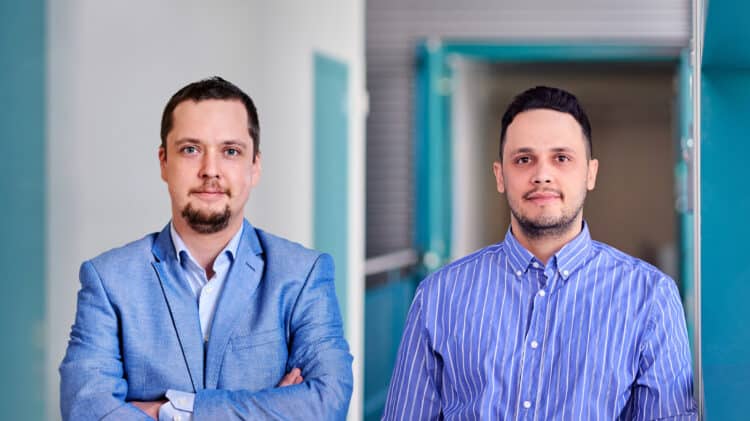
New Associate Professorships at CWC
The Centre for Wireless Communications (CWC) at the University of Oulu has recently recognised the significant contributions of two promising researchers, Onel López and Konstantin Mikhaylov, by promoting them to Associate Professor. The promotions reflect their essential roles in shaping the future of wireless communications, mainly through their innovative work in connectivity technologies.
Sustainability in 6G Networks
Onel López, how do you envision your work on sustainable wireless systems shaping the development of 6G networks?
“The development of 6G networks is placing sustainability at the forefront, not only by enhancing other sectors’ efforts toward sustainability but also by advancing the networks’ self-sustainability metrics—what we refer to as the handprint and footprint, respectively.
IoT networks are instrumental in achieving this dual goal of sustainability. Thus, their cellular connectivity support has been evolving from LTE Advanced through 5G and is poised to become central in 6G. On the handprint side, IoT networks drive economic growth through automation, data-driven decisions, and resource optimisation. They enhance social equity and well-being by improving safety, providing ubiquitous services, and supporting autonomous systems. They also aid environmental protection by optimising energy use and reducing waste.
The rapid expansion of IoT raises challenges, including increased maintenance, energy demands, and resource consumption for data storage and processing. Additionally, the manufacturing and disposal of IoT devices could have long-term economic, societal, and environmental impacts. I focus on addressing footprint challenges at the device and edge levels. They have significant implications for the handprint as well.”
What specific challenges are you most excited to tackle in your new role as Associate Professor?
“My goal is to contribute to developing maintenance-free, autonomous, imperceptible, low-cost, dependable massive IoT networks with intelligence distributed across the network, from the core to the edge, and even into low-complexity devices. Achieving this requires multi-disciplinary collaboration and innovative networking frameworks, which we actively pursue. My ultimate goal in my new role as Associate Professor is to push the boundaries of sustainable wireless IoT systems within 6G development.”
Convergent IoT Communications
Konstantin Mikhaylov, how do you see your work on Convergent IoT Communications for Vertical Systems contributing to the future of IoT and 6G networks?
“The various Internet of Things (IoT) devices – ranging from grain-size sensors to huge autonomous machines – are crucial enablers for future industries, smart environments, logistics, healthcare and wellness, entertainment, etc. The number of IoT devices and vertical-specific applications based on them grows rapidly, making IoT devices an essential element of next-generation communication and beyond communication ecosystems.
Our fundamental research question is how to enable efficient and sustainable connectivity for various IoT devices, addressing the challenging and often contradictory requirements imposed by IoT applications and use cases.
To address this challenge, we study the capabilities and limits of different IoT radio access technologies, optimising them or even developing new ones if we see that the existing ones cannot do the job. We also try to understand the communication requirements of the different existing and prospective IoT applications and seek efficient ways to address them. Last but not least is forming a single convergent communication ecosystem for versatile IoT devices, allowing them to detect each other, communicate, and interoperate safely and efficiently.”
What specific challenges are you most eager to address in your new role as Associate Professor?
“This is a great question! Being a field where ”one size does not fit all”, the IoT brings up many exciting research challenges. One of them we are currently actively looking at is how to enable IoT connectivity in remote areas where conventional communication infrastructure is either unavailable or performs insufficiently. We believe that to really bridge the digital divide, this is insufficient to enable just Internet access to every person; also, IoT applications and services must become available ubiquitously.
But my focus isn’t only on research challenges. There are crucial challenges beyond research as well. First, developing collaboration, especially with industry and potential IoT users, is key. Second, attracting and educating new IoT connectivity experts is vital. The first is crucial because IoT revolves around various applications and their needs, so understanding real-world challenges is a must. The second ensures we have the expertise needed for our research and to meet industry demands.”
Tomorrow’s Wireless Technologies
The promotions of Onel López and Konstantin Mikhaylov are more than career milestones; they signal the University of Oulu’s intent to lead, not follow, in the future of wireless communications. These promotions recognise the men’s past achievements and affirm their roles in contributing to the next wave of global innovation.